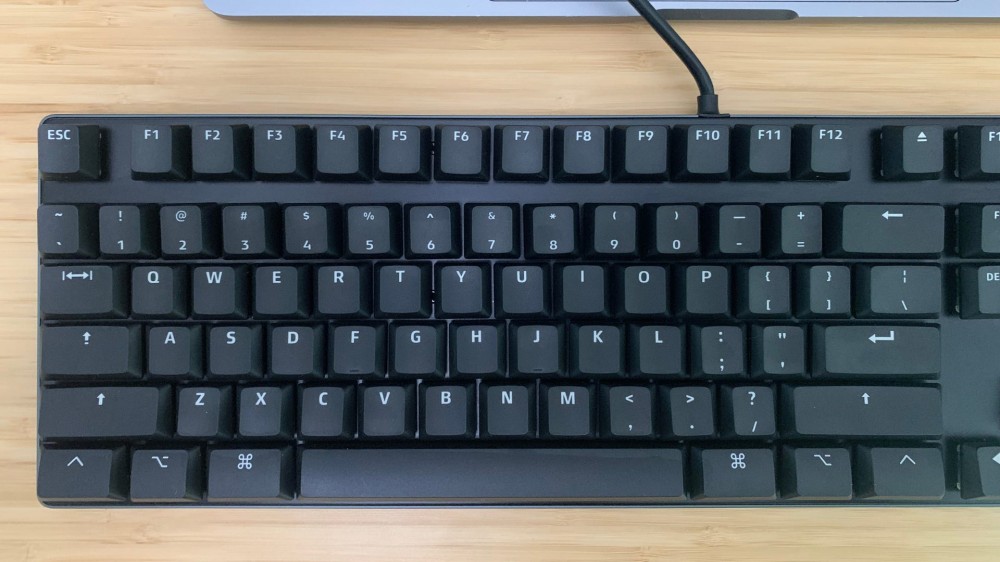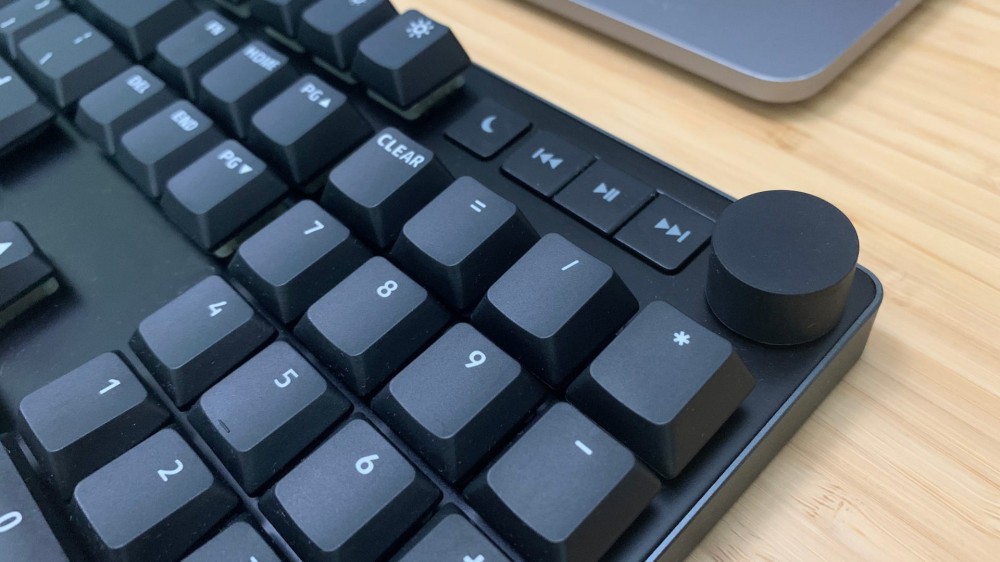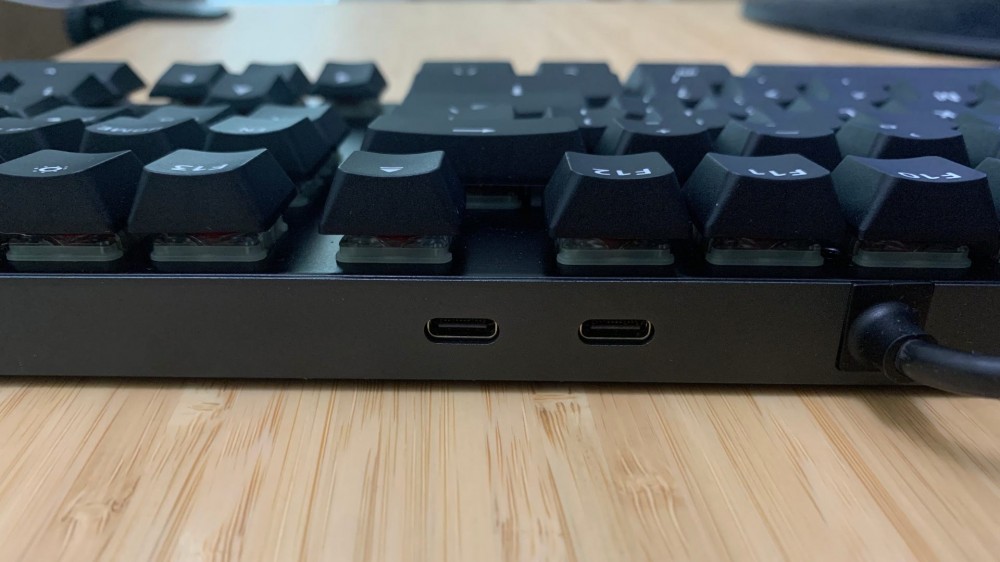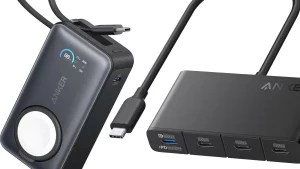Das Keyboard MacTigr Review: For the Low-Profile Mac User
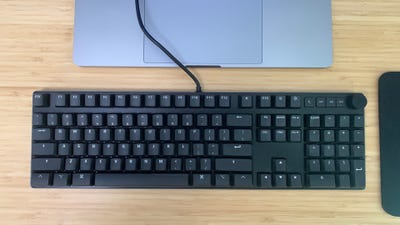

Modern-day Mac computers are sleek, elegant, and functional. Das Keyboard’s MacTigr seeks to extend that experience to your typing piece, featuring an all-metal chassis, an elegant black design, and Mac-specific controls. Fair warning, it comes with a Mac price tag, too.
Here’s What We Like
- Durable chassis, zero deck flex
- Satisfying volume wheel
- Cherry MX Low Profile Red switches
- Two USB-C charging ports
And What We Don’t
- Price is a tall order
- Little available customization
- Lack of backlighting
- No angle adjustments
Tired of your MacBook’s Butterfly keyboard? Give the MacTigr’s Cherry MX low-profile Red Switches a try. You won’t have to sacrifice media or sleep/wake controls, either. Let’s get into the review.
Design and Durability: Sleek and Strong
Customization Options: Or Lack Thereof
Typing Feel: Bouncy and Stiff
Should You Buy the Das Keyboard MacTigr?
Design and Durability: Sleek and Strong
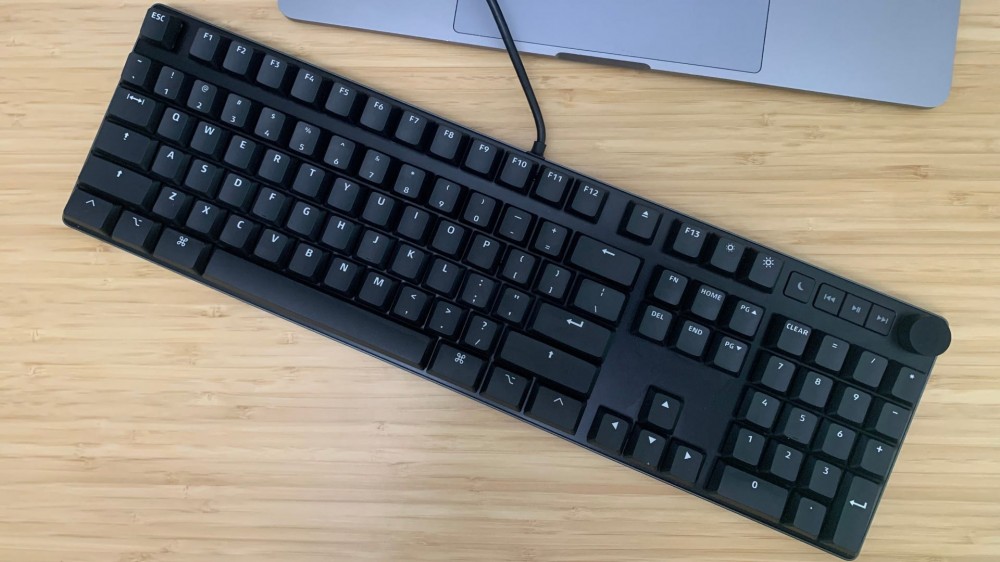
- Length: 17.16in (436mm)
- Width: 5in (127mm)
- Height: 1.06in (27mm)
- Weight: 2.43lbs (1100g)
The MacTigr sports an understated all-black design (with white lettering) that fits in just about anywhere—but not anytime. One of my few objections to adopting this keyboard is the absence of backlighting (barring the Caps Lock key). An all-black design can make the board tough to see at night, or in low-light situations in general. It doesn’t need flashy RGB, but a simple white backlight would go a long way for visibility and is typically present on a board at this price point.
The aluminum case and steel top plate, while solid and sturdy enough to keep everything secure, are still respectably lightweight for a 105-key board. This is thanks in part to the MacTigr’s low-profile design, a theme that carries over pleasantly to the board’s other components.
Das Keyboard employs Cherry MX low-profile Red switches and slim double-shot PBT keycaps to create the MacTigr’s tiny 1-inch height, which helps it conform to your desk and your fingers dance across the board. I’ll talk more about how it feels to type on in a later section.
At 105 keys, the MacTigr has a standard US QWERTY layout with Mac-specific buttons (like Command rather than Windows’ Control), a numpad, a full row of function keys, an eject button for optical disc drives (now largely a relic of the past), and a few homemade additions. To the right of the eject button, you’ll find brightness up/down keys, a sleep/wake key, media-control buttons for skip forward/back and play/pause, and a satisfying volume wheel.
Note: You can use the MacTigr with a Windows machine, but you’ll have to figure out how to work the Mac-specific keys.
The extra functionality is appreciated, and I found myself using the brightness control and sleep/wake keys almost as often as the volume wheel. I’d wager that most of you who have dealt with touch bar audio controls would welcome an alternative, and the MacTigr provides.
The wheel provides a short haptic click with each increment of volume changed, is easy to reach with one hand for quick adjustments, and doesn’t get in the way of other important keys. This area is a win for the MacTigr, and small victories like this separate quality keyboards from the rest.
Moving around to the back of the board, you’ll find two USB-C ports capable of charging your daily driver devices (like an iPhone or wireless earbuds) and transferring data at blazing speeds. These worked flawlessly, but I’d like more confirmation when the cord docks successfully. Plugging a charger into an iPhone, you’re met with a “click” that you can feel, and sometimes hear, when it’s secured. Plugging a USB-C cord into the MacTigr is a bit of a guessing game; it’s far from a deal-breaker, but something you notice on a board of this price range.
Sorry 30-degree typing fans, there are no angle adjustments on the MacTigr, barring any DIY solutions. The bottom of the board has four rubber feet to the keep it in place while you type and is devoid of anything else.
Customization Options: Or Lack Thereof
The MacTigr’s lack of customization options surprised me. Usually, mechanical keyboards similar in price to the MacTigr offer a number of ways to change things up on a moment’s notice. Customization software for backlighting and macros, hot-swappable switches for different feels on different days—there are countless ways to mod a board.
Das Keyboard goes a different route with the MacTigr, though. Rather than offering options, they offer a straightforward, quality keyboard. If you’re not interested in getting under your keyboard’s hood, a lack of customization options won’t matter, and may even be preferable to you. But it does pose a concern for longevity.
While the switches are rated for an everlasting 100 million keystrokes, accidents that lead to a broken key switch absolutely can happen, and in the case of this board, may spell the need for a replacement MacTigr.
Typing Feel: Bouncy and Stiff
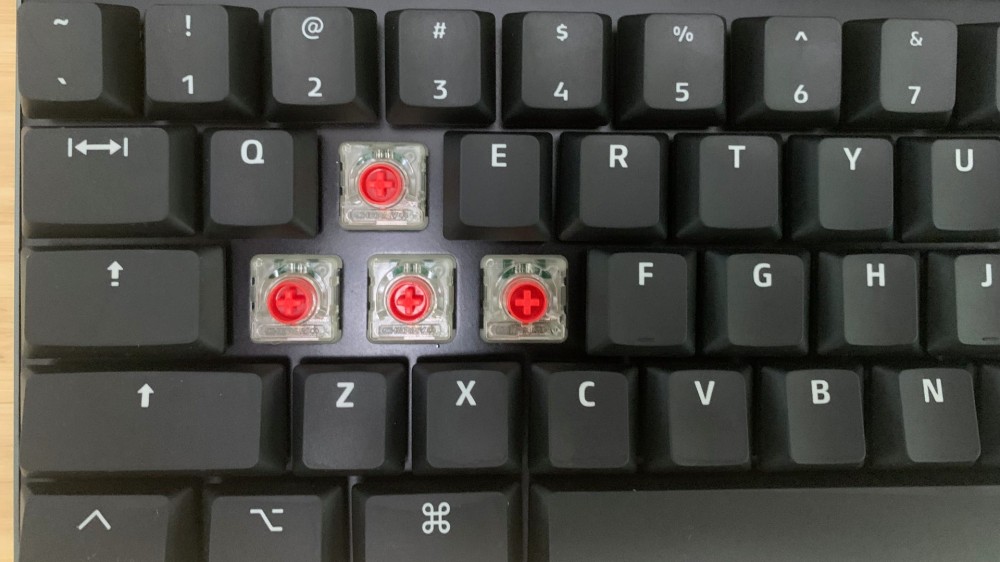
- Switches: Cherry MX linear low-profile Red
- Keycaps: Double-shot PBT
- Operating life: 100 million
- Tactile force: 45cN (45.88g)
All of the fancy buttons and aluminum exteriors in the world don’t mean a thing unless the MacTigr feels good under the fingertips. It does, but there’s room for improvement.
Coming from the last low-profile board I had my hands on, the Logitech MX Mechanical, the MacTigr feels rigid and more accurate with individual keystrokes. The MacTigr’s short keycaps and Cherry MX low-profile Red switches promote a quick, bouncing typing method as you make your way from letter to letter.
Typos were scarce because bumping keys isn’t easy with the actuation force required to complete a keystroke, and N-key rollover (NKRO) ensures every input is accounted for.
As far as sound goes, the MacTigr isn’t nearly as loud as a board that uses Blue switches, but is noisier than Apple’s Magic Keyboard or your standard laptop keyboard.
The stabilizers, while plate-mounted (rather than screw-in), are far from the worst I’ve used. The Shift, Enter, and Space Bar keycaps allow a bit of wobble, but keep keystrokes comfortable and even—the less you notice stabilizers the better, and the MacTigr’s never became a point of frustration.
If you prefer gliding across buttery-smooth keys, steer clear of this board and check out something like the Keychron Q3 QMK, which features pre-lubed key switches. This is an area I think the MacTigr could improve; once you’ve tried lubed switches, it’s tough to go back. And since it’s not hot-swappable, it’s almost impossible to apply lube to the board yourself (unless you’re willing to break out a soldering iron and dig into the components). I’d like to see a few different switch options in the future, preferably pre-lubed.
But if you’re a fan of stiff feedback on every keystroke, the MacTigr was designed with you in mind.
Should You Buy the Das Keyboard MacTigr?
I recommend the Das Keyboard MacTigr if you’re a Mac user who wants a mechanical keyboard that fits your needs, and you aren’t too concerned with customizing or maintaining it. You should also take a liking to bouncing across the board from letter to letter rather than chaining your keystrokes in rapid succession.
I’d seek out another option if you are primarily a Windows user, enjoy keyboard modification and upkeep, or travel with your board often.
For 105 keys with Mac-specific functions, convenient USB-C ports, a satisfying volume wheel, and a sturdy exterior, purchase the MacTigr today for $219.99. Ideally, though, pick up the MacTigr if/when Das Keyboard offers a sale.
Here’s What We Like
- Durable chassis, zero deck flex
- Satisfying volume wheel
- Cherry MX Low Profile Red switches
- Two USB-C charging ports
And What We Don’t
- Price is a tall order
- Little available customization
- Lack of backlighting
- No angle adjustments


